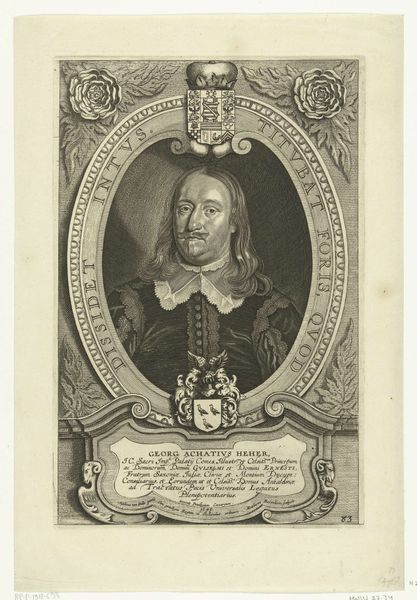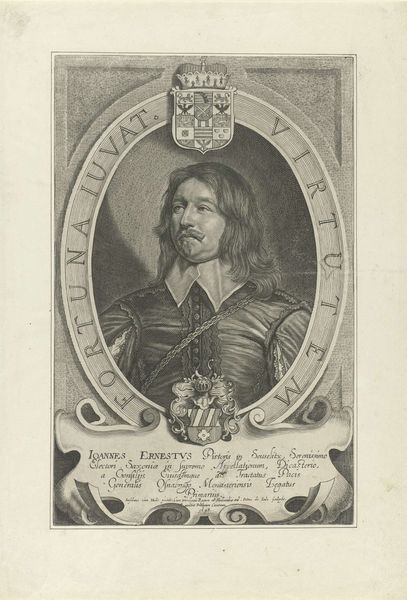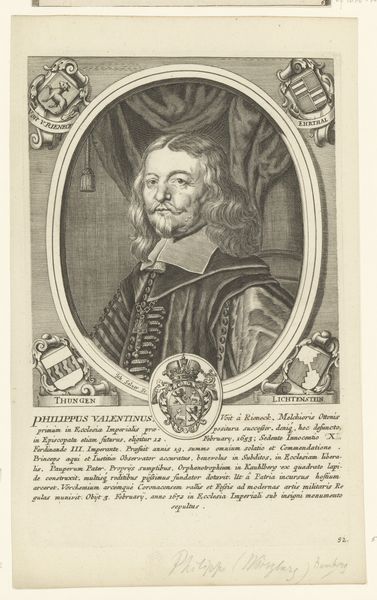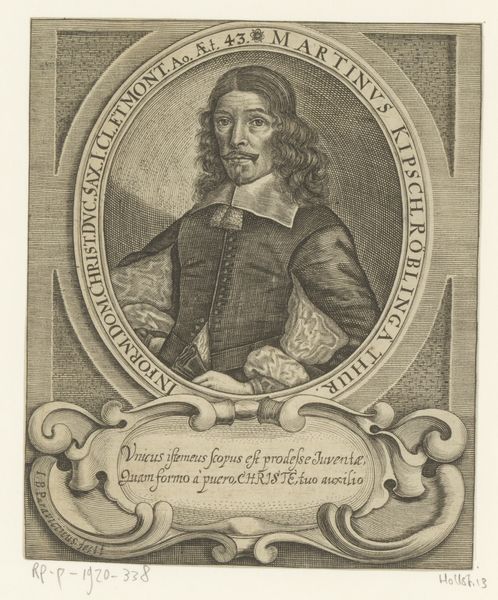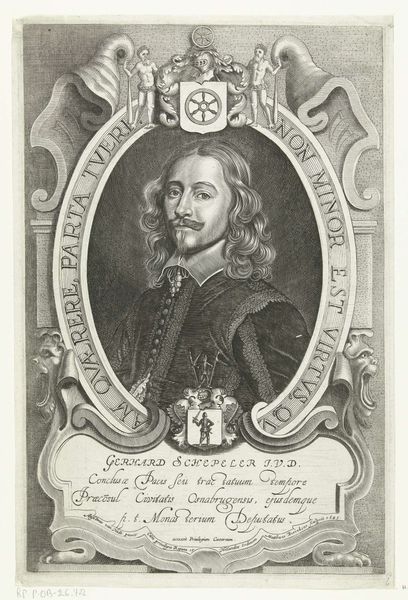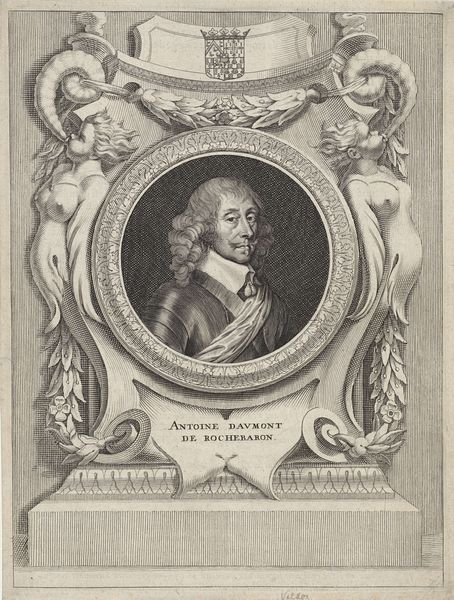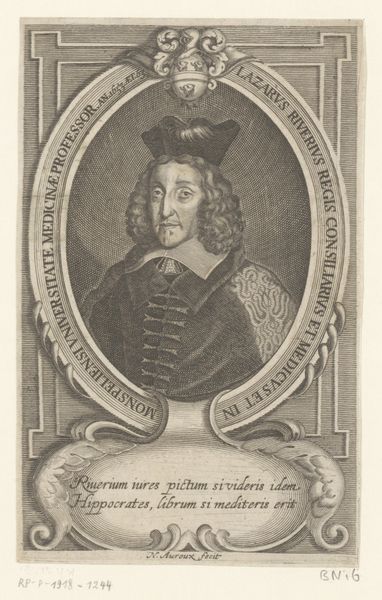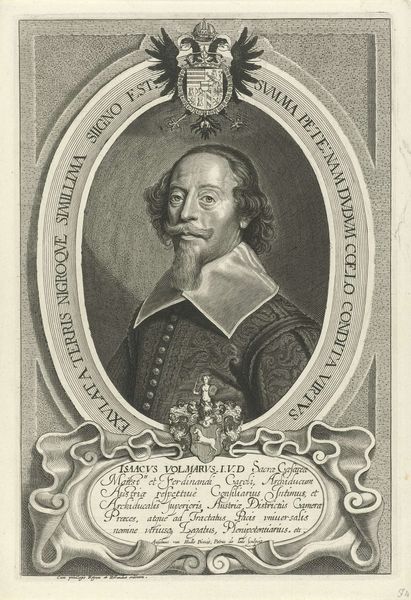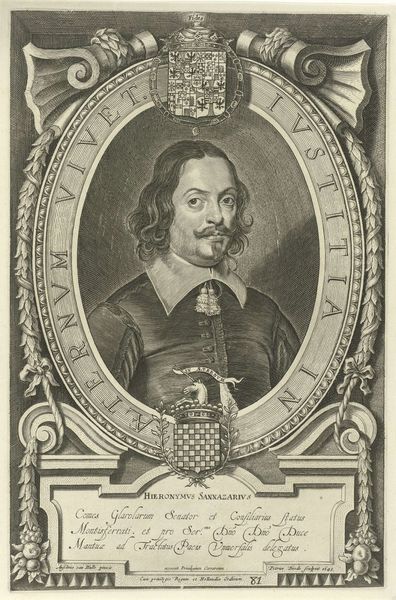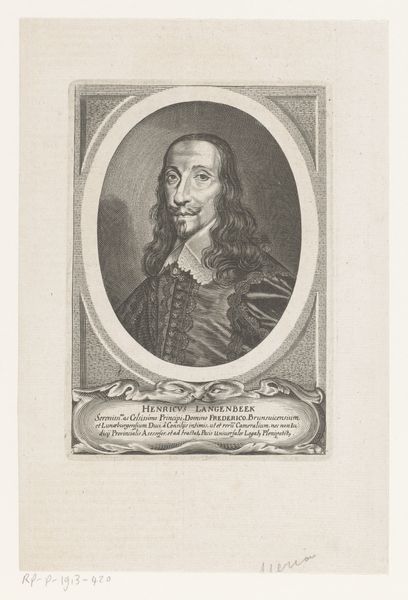
#
photo of handprinted image
#
aged paper
#
toned paper
#
wedding photograph
#
photo restoration
#
ink paper printed
#
old engraving style
#
personal sketchbook
#
cartoon carciture
#
pencil art
Dimensions: height 295 mm, width 196 mm
Copyright: Rijks Museum: Open Domain
Curator: Here we have Mattheus Borrekens's "Portret van August Carpzow," created in 1649. It resides here in the Rijksmuseum. Editor: My first thought is 'dignified constraint'. The oval frame feels so tight around him, almost like he's being carefully contained. It makes you wonder about the expectations he’s carrying. Curator: An excellent point. Frames in portraiture always suggest something about status, control, or boundaries, don't they? Here, the frame's ornate design, along with the Latin inscription “Deo, Regi et Legi" – "To God, King, and Law" – indicates the sitter's social and spiritual obligations. And just above Carpzow's head is a coat-of-arms, underscoring his lineage. Editor: Right! It is almost aggressively proclaiming authority. It really comes off as "this is who this important man is" as opposed to "here's what I think." Curator: This image speaks to a society where reputation, lineage, and piety were paramount. This wasn't simply about capturing a likeness; it was about constructing a carefully curated image of a man of significance. I am curious what you make of Carpzow himself? The slight softening of his expression seems to hint a deeper thoughtfulness to the individual. Editor: Oh, definitely. Underneath all the external pomp and circumstance, there's a weariness. The weight of all that authority perhaps? Curator: The engraving medium adds to the effect. It conveys the crisp precision, but its grayscale enforces the solemnity of duty, a man defined in certain times by stark binaries of faith, kingdom and legal prescription. Editor: Yes, it's all about conveying lasting importance. Something fixed in time and space... which ironically, I find makes me think of how fragile reputations can be. A tiny slip and the whole edifice crumbles! Curator: Perhaps Borrekens inadvertently captured that tension as well. The formal pronouncements clash softly with human realities: the essence of living an honest existence even through periods of deep strife. Editor: Which makes it feel modern, doesn’t it? As historical figures in this image become recognizable as a regular human, there is this understanding that the human condition still applies and resonates today. Curator: Absolutely. An image like this is both a historical record and an enduring exploration into the intersection of individual humanity and symbolic representation of societal order. Editor: That intersection fascinates. Every portrait is, in some ways, a mask. The play between the mask and what it conceals – that’s the delicious bit, right?
Comments
No comments
Be the first to comment and join the conversation on the ultimate creative platform.

